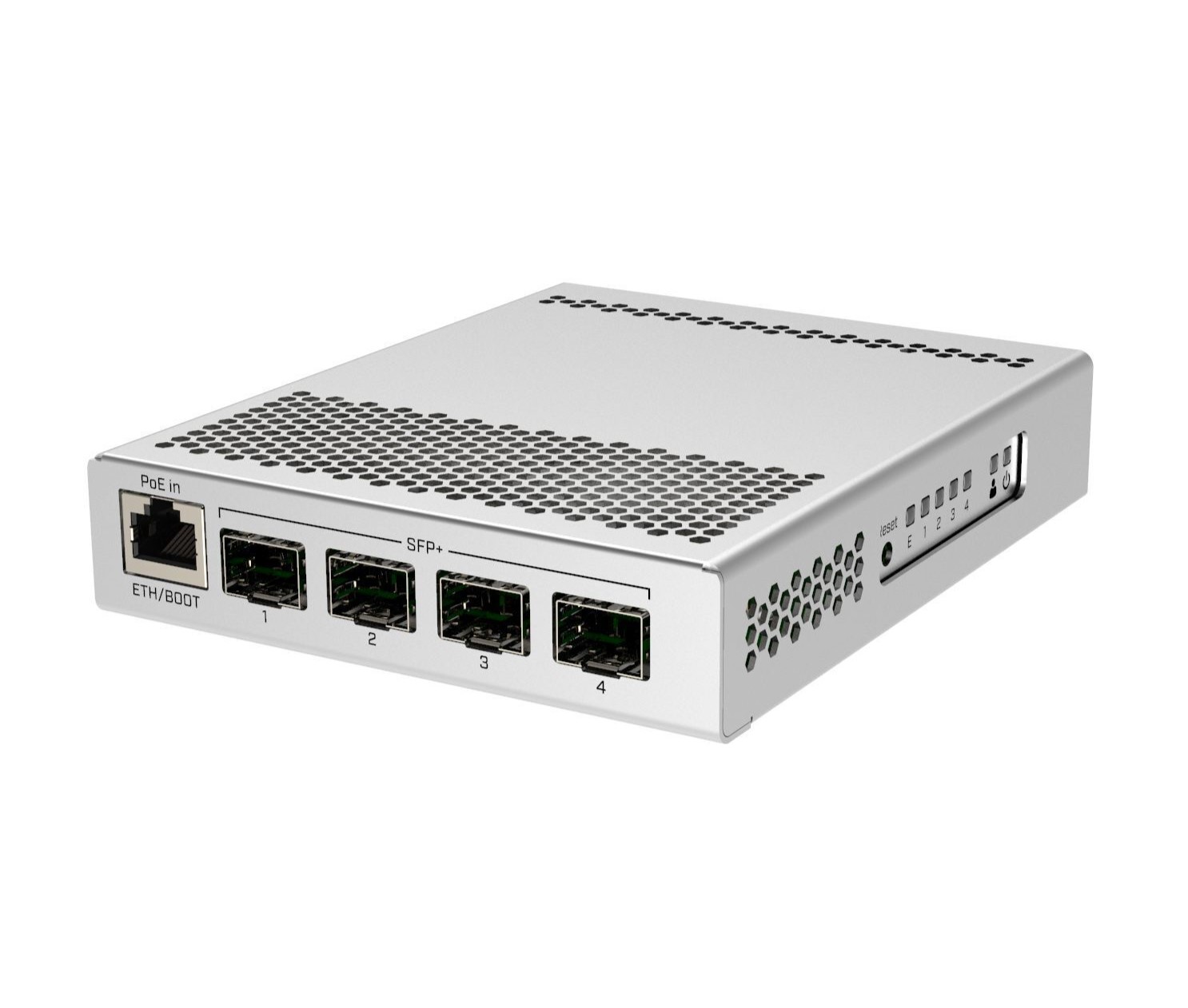Introduction
Setting up a network switch to automatically shut off a port when a specific device connects to the network is a crucial aspect of network security and management. This proactive measure helps prevent unauthorized or potentially harmful devices from accessing the network, safeguarding sensitive data and ensuring the integrity of the network infrastructure.
Network switches play a pivotal role in directing network traffic efficiently by using the device's MAC address. By configuring the switch to recognize and respond to specific MAC addresses, administrators can implement a powerful security measure. When the switch detects the MAC address of a prohibited device, it can take predefined actions, such as shutting off the port to which the device is connected, effectively isolating it from the network.
This article explores the process of setting up a network switch to automatically disable a port upon detecting a specific device. Understanding the fundamentals of network switches and learning how to configure them for this purpose is essential for network administrators and IT professionals seeking to enhance their network security measures.
By following the steps outlined in this guide, you will gain valuable insights into the configuration and testing of this security feature, empowering you to bolster your network's defenses against potential security threats. Let's delve into the intricacies of network switches and discover how to configure them to automatically shut off a port when a certain device connects to the network.
Understanding Network Switches
Network switches are essential components of modern computer networks, serving as intelligent devices that manage the flow of data within a network. Unlike traditional hubs, which indiscriminately broadcast data to all connected devices, switches use the MAC addresses of connected devices to intelligently direct data only to the intended recipients. This efficient data transmission method minimizes network congestion and enhances overall network performance.
Switches operate at the data link layer (Layer 2) of the OSI model, making forwarding decisions based on MAC addresses. When a device is connected to a switch, the switch learns the device’s MAC address and associates it with the port through which the device is connected. This enables the switch to create a MAC address table, also known as a forwarding table, which maps MAC addresses to specific switch ports. As a result, when data needs to be transmitted to a specific device, the switch uses this table to determine the appropriate port for forwarding the data, optimizing network traffic.
Understanding the functionality of network switches is crucial for implementing advanced security measures, such as configuring a switch to shut off a port when a specific device connects to the network. By leveraging the switch’s ability to recognize and respond to specific MAC addresses, administrators can proactively safeguard the network against unauthorized or potentially malicious devices.
Furthermore, modern network switches often come equipped with advanced features that enable administrators to implement access control and security policies. These features include port security, which allows administrators to restrict and manage access to individual switch ports based on MAC addresses, thereby fortifying the network against unauthorized access attempts.
As we delve deeper into the configuration of network switches to automatically disable ports upon detecting specific devices, a comprehensive understanding of switch functionality will be instrumental in effectively implementing this security measure. Let’s proceed to the next section to explore the process of configuring a network switch for this purpose.
Configuring the Network Switch
Configuring a network switch to automatically shut off a port when a specific device connects to the network involves leveraging the switch’s port security features and implementing specific configuration settings. The process typically begins with accessing the switch’s management interface, which can be done through a web-based interface or a command-line interface, depending on the switch model and the administrator’s preference.
Once logged into the switch’s management interface, the administrator can proceed with configuring port security settings. One of the primary configurations involves enabling port security on the switch ports to which devices are connected. This can be achieved by specifying the maximum number of MAC addresses allowed on each port and determining the action to be taken when a violation occurs, such as shutting down the port or restricting traffic.
Subsequently, the administrator must define the specific MAC addresses that are authorized to connect to each switch port. By configuring the switch to recognize and allow only predetermined MAC addresses, the network can be safeguarded against unauthorized devices attempting to gain access. Additionally, the administrator can specify the action to be taken when an unauthorized MAC address is detected, such as disabling the port to prevent further network access.
Furthermore, some network switches support dynamic MAC address learning, allowing the switch to automatically add authorized MAC addresses to its address table when devices connect to the network. This feature streamlines the process of managing and updating authorized MAC addresses, enhancing the switch’s responsiveness to network changes.
It is important to note that the specific steps and options for configuring port security and MAC address filtering may vary depending on the switch model and the capabilities of the switch’s operating system. Therefore, administrators should refer to the switch’s documentation and user manual for detailed instructions tailored to their specific switch model.
As we delve into the technical aspects of configuring a network switch to automatically shut off ports upon detecting specific devices, it is essential to ensure that the configuration aligns with the network’s security policies and access control requirements. Let’s proceed to the next section to explore the testing of the configured setup and its effectiveness in securing the network.
Testing the Setup
After configuring the network switch to automatically shut off a port when a specific device connects to the network, thorough testing is essential to validate the effectiveness of the implemented security measure. Testing the setup involves simulating various scenarios to ensure that the switch responds appropriately to the presence of both authorized and unauthorized devices.
One of the initial tests involves connecting a device with an authorized MAC address to the configured switch port. Upon connecting the authorized device, the switch should allow network access as per the configuration, and the port should remain active and operational. This test validates that the switch correctly identifies and permits authorized devices to connect to the network without triggering any port shutdowns.
Subsequently, the testing process should include simulating the connection of unauthorized devices to the switch ports with port security enabled. By connecting a device with an unauthorized MAC address, administrators can observe the switch’s response to a potential security violation. Ideally, the switch should detect the unauthorized MAC address and take the predefined action, such as shutting down the port to prevent the unauthorized device from accessing the network.
Additionally, administrators can perform tests to assess the switch’s ability to dynamically learn and update MAC addresses in its address table. This involves connecting new devices to the network and verifying that the switch accurately adds the MAC addresses of these devices to its address table, allowing authorized devices to seamlessly access the network while promptly responding to unauthorized attempts.
Furthermore, administrators should consider conducting tests to ensure that the switch’s port security settings persist across reboots and configuration changes. Verifying the persistence of the configured security measures is crucial for maintaining a consistent and reliable security posture within the network infrastructure.
Throughout the testing phase, it is imperative to document the test scenarios, observations, and outcomes to facilitate comprehensive validation and troubleshooting, if necessary. By meticulously testing the configured setup under various conditions, administrators can gain confidence in the switch’s ability to enforce port security measures effectively.
As we proceed to the concluding section, we will reflect on the significance of implementing proactive security measures and the impact of configuring a network switch to automatically shut off ports when specific devices connect to the network.
Conclusion
Configuring a network switch to automatically shut off a port when a specific device connects to the network is a critical aspect of network security management. By leveraging the switch’s port security features and MAC address filtering capabilities, administrators can proactively safeguard the network against unauthorized or potentially harmful devices, bolstering the overall security posture of the network infrastructure.
Understanding the fundamental role of network switches in directing and managing network traffic is essential for implementing advanced security measures. By configuring port security settings and specifying authorized MAC addresses, administrators can effectively control network access and fortify the network against unauthorized intrusions.
Thoroughly testing the configured setup is paramount to validate its effectiveness in responding to authorized and unauthorized network access attempts. By simulating various scenarios and documenting the outcomes, administrators can ensure that the switch accurately enforces port security measures and dynamically updates its MAC address table in response to network changes.
Ultimately, the successful configuration of a network switch to automatically shut off ports upon detecting specific devices empowers organizations to mitigate security risks and maintain the integrity of their network environments. This proactive approach to network security aligns with best practices for access control and reinforces the overall resilience of the network infrastructure.
As technology continues to evolve, network administrators and IT professionals must remain vigilant in implementing robust security measures to safeguard against emerging threats. Configuring network switches to enforce port security based on MAC address detection is a proactive step toward enhancing network resilience and protecting sensitive data from unauthorized access.
By staying abreast of advancements in network security and diligently configuring network switches to adapt to evolving security challenges, organizations can fortify their networks against potential vulnerabilities and ensure the confidentiality, integrity, and availability of critical network resources.

























